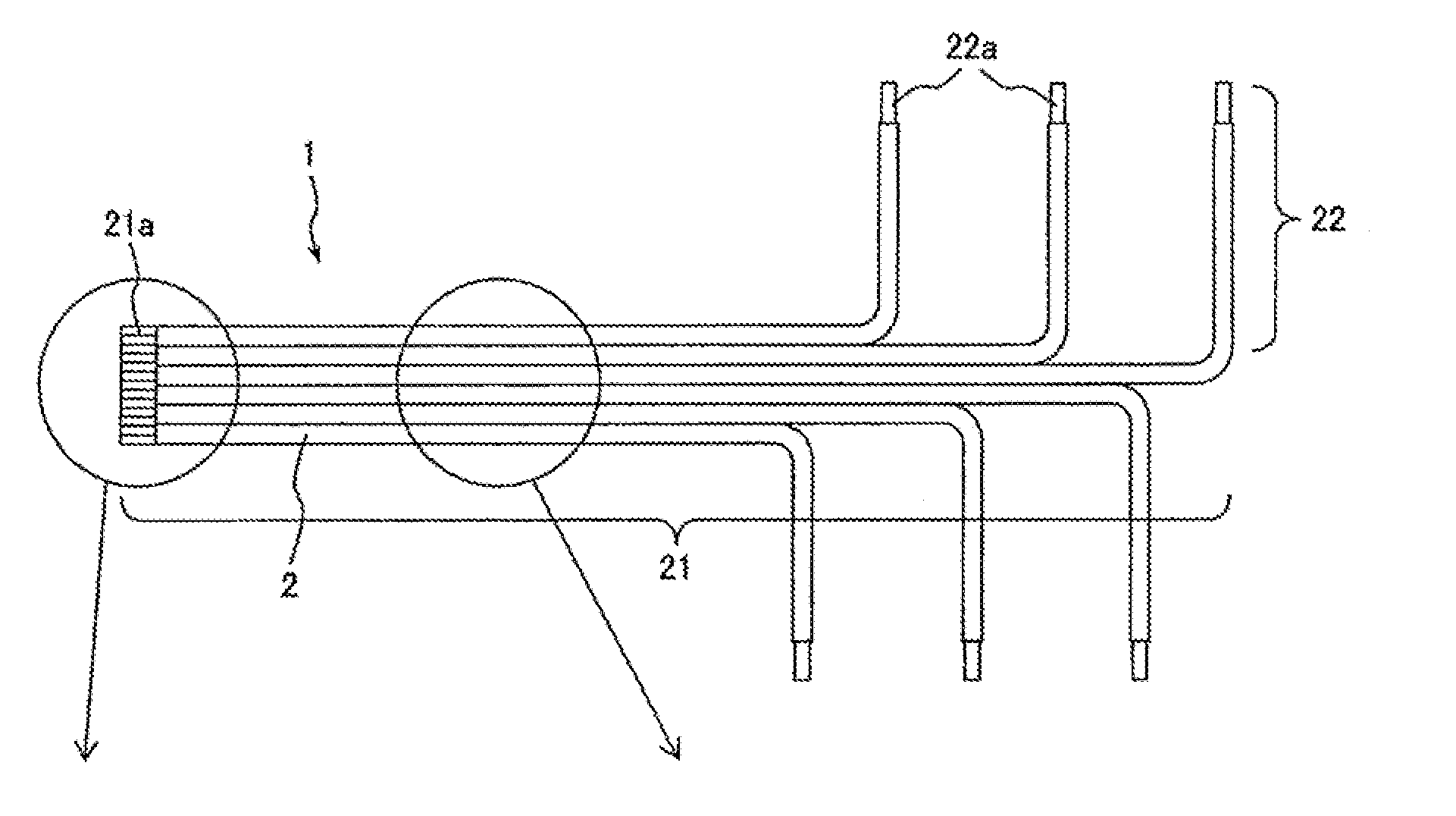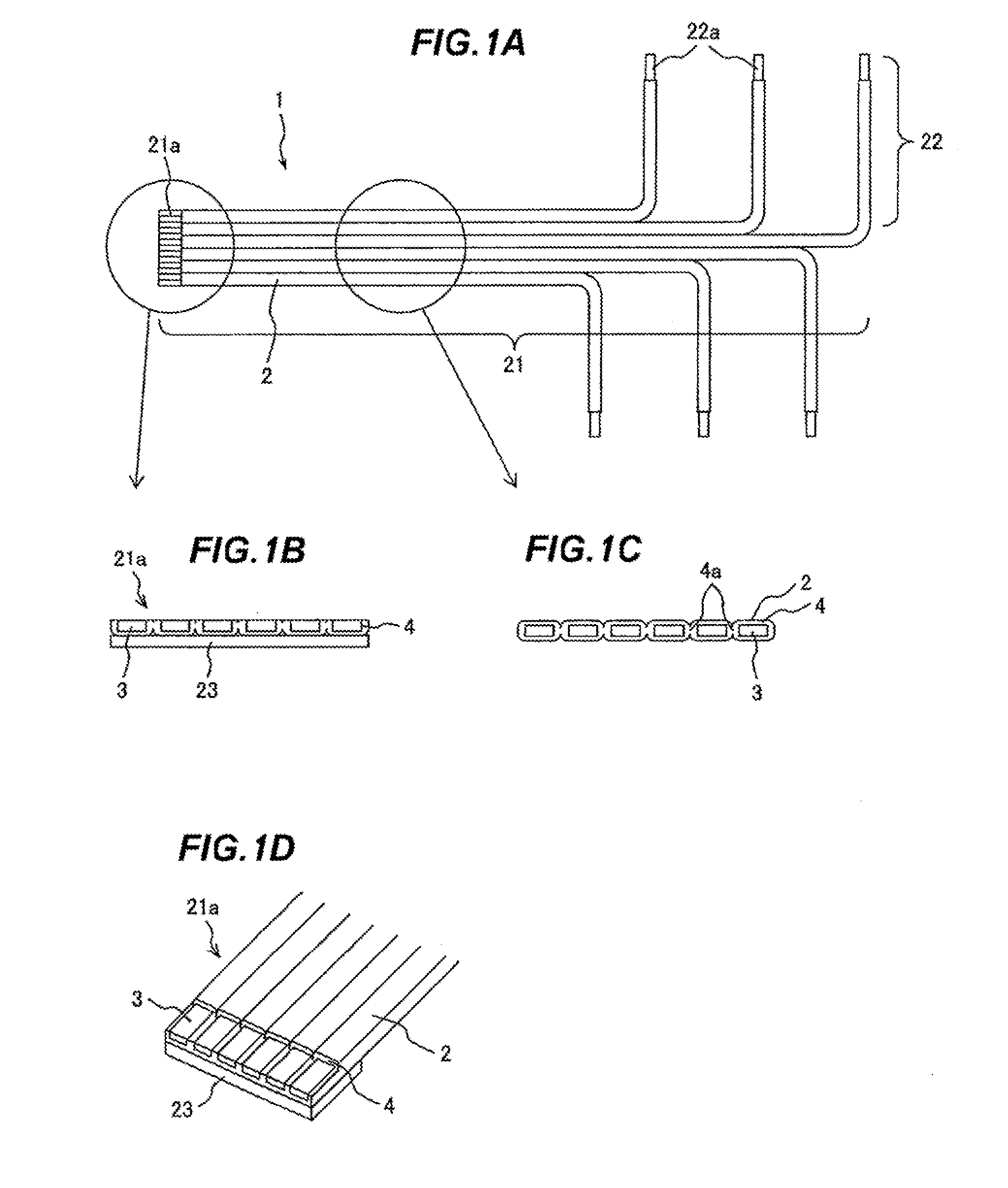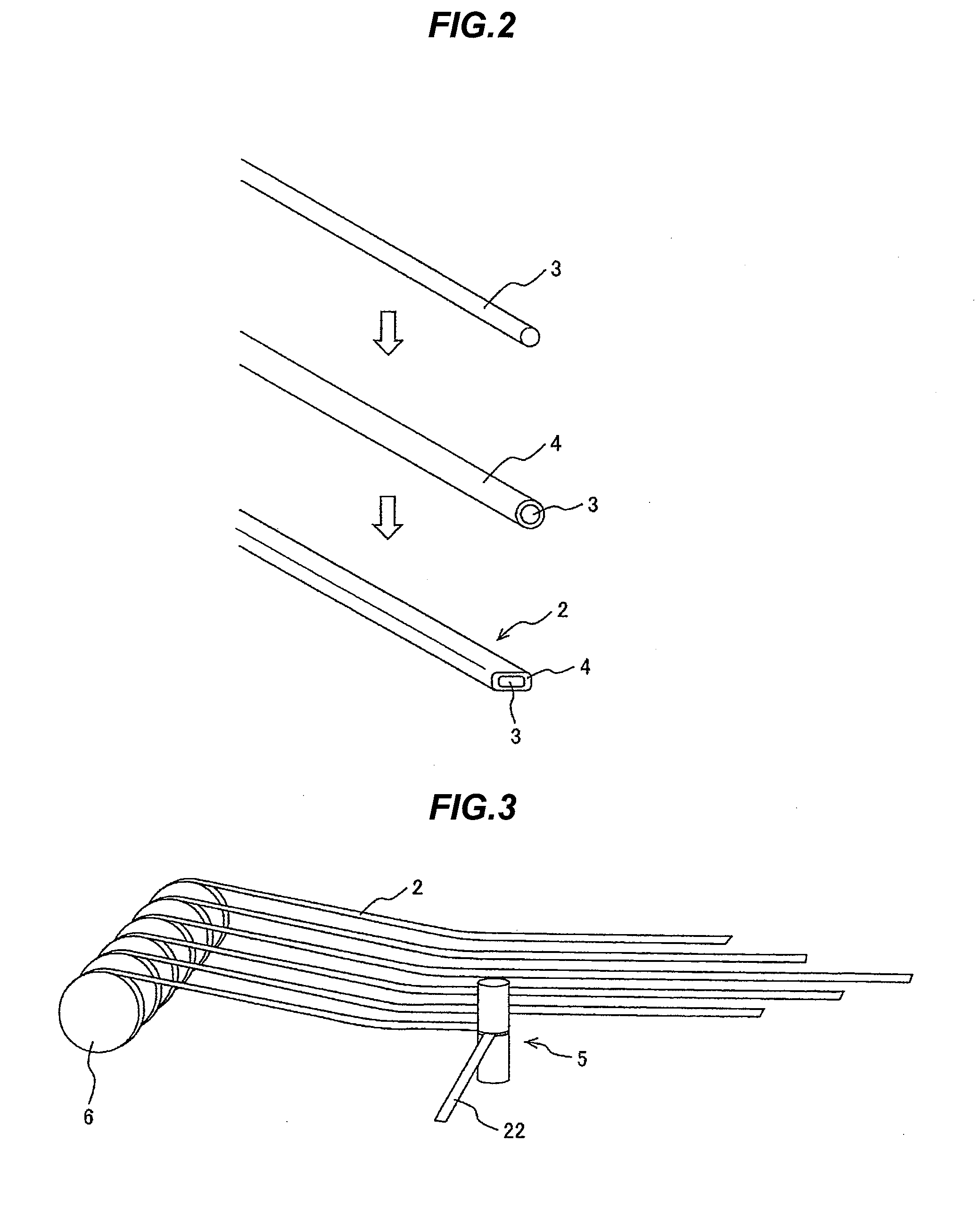Flat wiring member and method of manufacturing the same
a wiring member and flat technology, applied in the field of flat wiring members, can solve the problems of increased manufacturing cost, disadvantageous in terms of manufacturing cost, and difficulty in separating conductor wires from give positions, so as to prevent an increase in wiring resistance and reduce cost
- Summary
- Abstract
- Description
- Claims
- Application Information
AI Technical Summary
Benefits of technology
Problems solved by technology
Method used
Image
Examples
first embodiment
Flat Wiring Member
[0048]FIGS. 1A to 1D are schematic views showing an example of a flat wiring member in an embodiment of the invention. In detail, FIG. 1A is a front view of the entire flat wiring member 1, FIG. 1B is a cross sectional view of a terminal portion 21a of a wiring stem portion 21, FIG. 1C is a cross sectional view of the wiring stem portion 21, and FIG. 1D is a perspective view of the terminal portion 21a of the wiring stem portion 21.
[0049]As shown in FIGS. 1A to 1D, the flat wiring member 1 in the invention is formed by arranging plural rectangular enamel coated wires 2 in the form of a flat plate and has the wiring stem portion 21 and wiring branch portions 22. The wiring stem portion 21 is composed of the plural rectangular enamel coated wires 2 aligned in parallel to each other in which edge surfaces 4a of enamel coat layers 4 of the adjacent rectangular enamel coated wires 2 are adhered to each other, and each wiring branch portion 22 is formed by bending the re...
second embodiment
Flat Wiring Member
[0082]FIG. 8 is a schematic front view showing an example of a flat wiring member in the second embodiment. As shown in FIG. 8, a flat wiring member 1′ in the second embodiment is different from the first embodiment in that the wiring branch portions 22 extend over the wiring stem portion 21.
[0083]In the flat wiring member of the invention, each conductive wire is an enamel coated wire and electrical insulation between the conductive wires is thus ensured. Therefore, electrical short circuit does not occur even when the wiring stem portion 21 intersects with the wiring branch portions 22 as is in the flat wiring member 1′. Furthermore, since the rectangular enamel coated wire 2 is used as the conductive wire, an increase in a thickness at a crossover point is the minimum.
[0084]The flat wiring member 1′ demonstrates that branching position and direction of the wiring branch portion 22 from the wiring stem portion 21 can be arbitrarily determined. In other words, the...
PUM
| Property | Measurement | Unit |
|---|---|---|
| length | aaaaa | aaaaa |
| size | aaaaa | aaaaa |
| size | aaaaa | aaaaa |
Abstract
Description
Claims
Application Information
 Login to View More
Login to View More - R&D
- Intellectual Property
- Life Sciences
- Materials
- Tech Scout
- Unparalleled Data Quality
- Higher Quality Content
- 60% Fewer Hallucinations
Browse by: Latest US Patents, China's latest patents, Technical Efficacy Thesaurus, Application Domain, Technology Topic, Popular Technical Reports.
© 2025 PatSnap. All rights reserved.Legal|Privacy policy|Modern Slavery Act Transparency Statement|Sitemap|About US| Contact US: help@patsnap.com



